THE FIRST four lessons of this tutorial are for beginners who have never prayed the Rosary at all. If you can already pray the Rosary in English, but want to learn how to chant it in Latin, you can skip the first four lessons and jump directly to Lesson V.
Now let us begin. Our first task is to familiarize ourselves with the Rosary beads.
Below is a scanned image of a typical Dominican Rosary. Well, maybe not “typical”. This particular Rosary is very special to me. It belonged to my Aunt Lupe who died in 2005, at age 90. But that’s another story for another time.
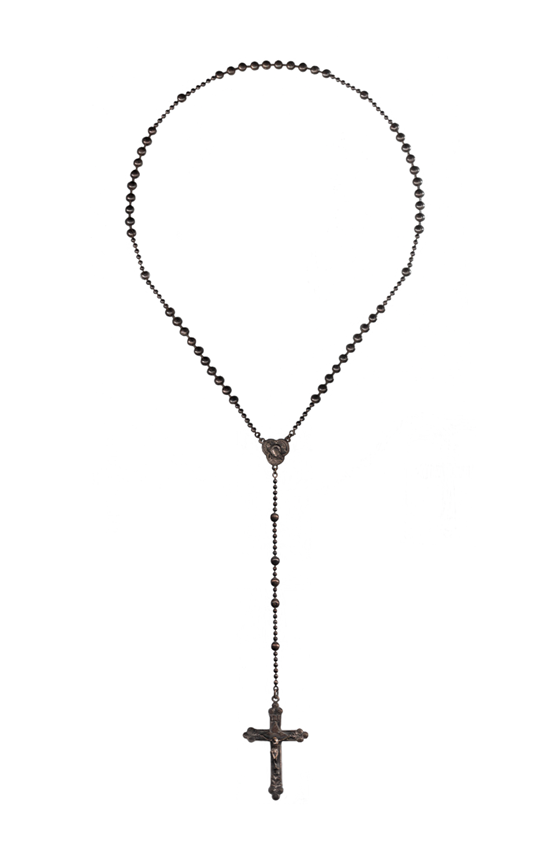
As you can see, Aunt Lupe’s Rosary has 59 beads. In fact, all Dominican Rosaries have 59 beads.
The beads tell us which prayers to recite and in which order. As we work our way around the Rosary, each bead we encounter represents a particular prayer. We hold the bead in our hand, recite the appropriate prayer, then go on to the next bead.
Obviously, it is important to know which beads represent which prayers. This task is made easy by the fact that the Dominican Rosary has only two types of beads, representing only two prayers; the “Our Father” and the “Hail Mary“.
“Our Father” Beads and “Hail Mary” Beads
So how do we tell an “Our Father” bead from a “Hail Mary” bead”? Let’s take a look. Below left is an “Our Father” bead from my Aunt Lupe’s Rosary, at nearly 600-percent magnification. Below right is a “Hail Mary” bead from the same Rosary.
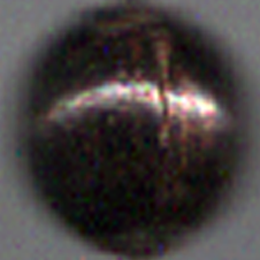 |
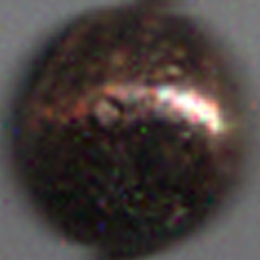
|
If you see any significant difference between these beads, you are imagining things. They are identical.
This is the case with most Rosaries. On some, the “Our Father” beads differ from the “Hail Mary” beads in size, shape or color. But most are like my Aunt Lupe’s Rosary. Every bead looks exactly the same.
How then can we distinguish the “Our Father” beads from the “Hail Mary” beads?
The Rule of Rosary Beads
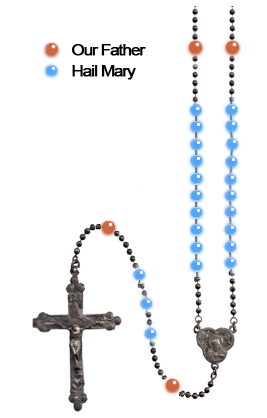
It’s easier than you think!
The diagram on the left illustrates the simple rule for distinguishing “Our Father” beads from “Hail Mary” beads. It is this:
Hail Mary beads always come in groups. Our Father beads always stand alone.
In the diagram, Our Father beads are colored red, while Hail Mary beads are shown in blue.
Note that the Hail Mary beads always appear in groups or clusters. Our Father beads never appear in groups. They always appear by themselves.
If we were to color-code my Aunt Lupe’s Rosary, in its entirety, with every “Our Father” bead colored red, and every “Hail Mary” bead blue, it would look like this:
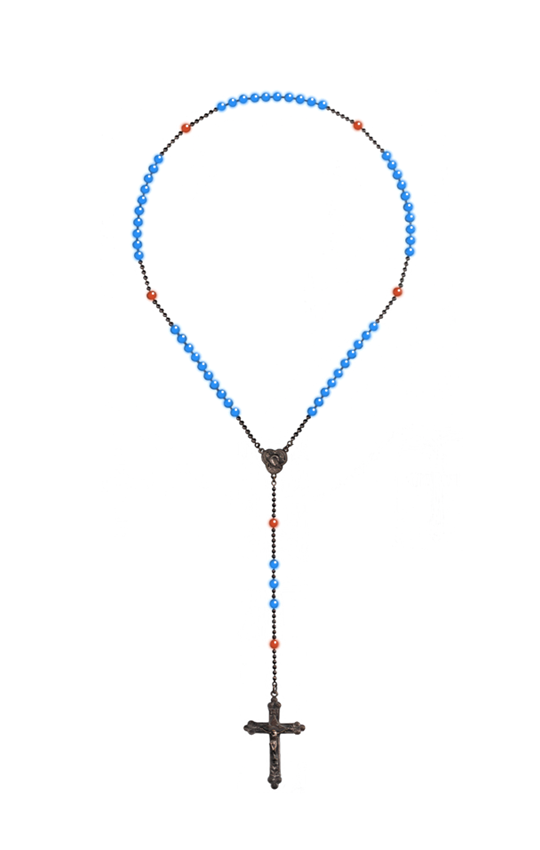
The Five Decades of the Rosary
As previously noted, the Dominican Rosary has 59 beads. Now — with the aid of the color-coded Rosary above — we can see that 53 of those beads are “Hail Mary” beads, and six of them “Our Father” beads.
The Hail Mary beads are divided into five groups of ten beads each. A group of ten Hail Mary beads is called a “decade”.
The five decades of the Rosary account for fifty of the Hail Mary beads. This leaves three more. The three leftover “Hail Mary” beads are called the “Antiphon Beads” and are grouped in a triad, hanging from the Pendant. The illustration below shows the positions of this triad and of the five decades.
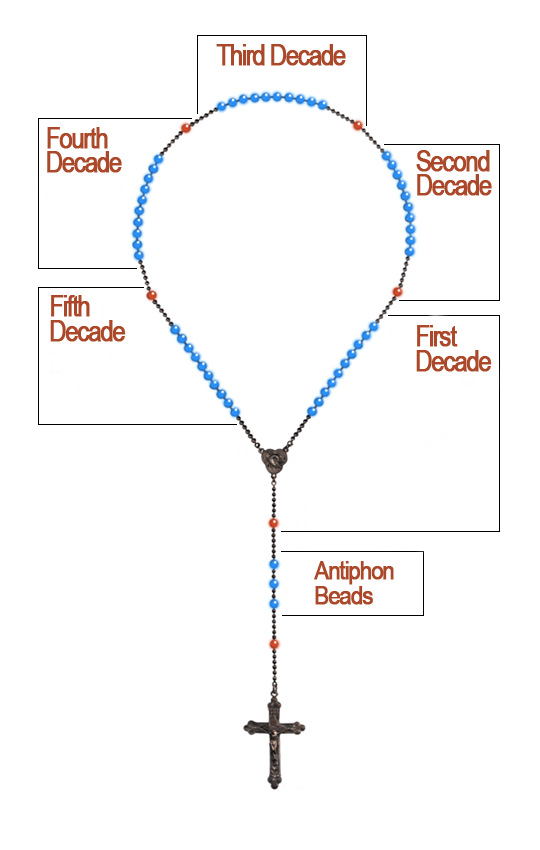
This concludes our lesson on the Rosary beads. In the next lesson, we will learn the simplest and easiest method for praying the Rosary. Proceed to Lesson II.